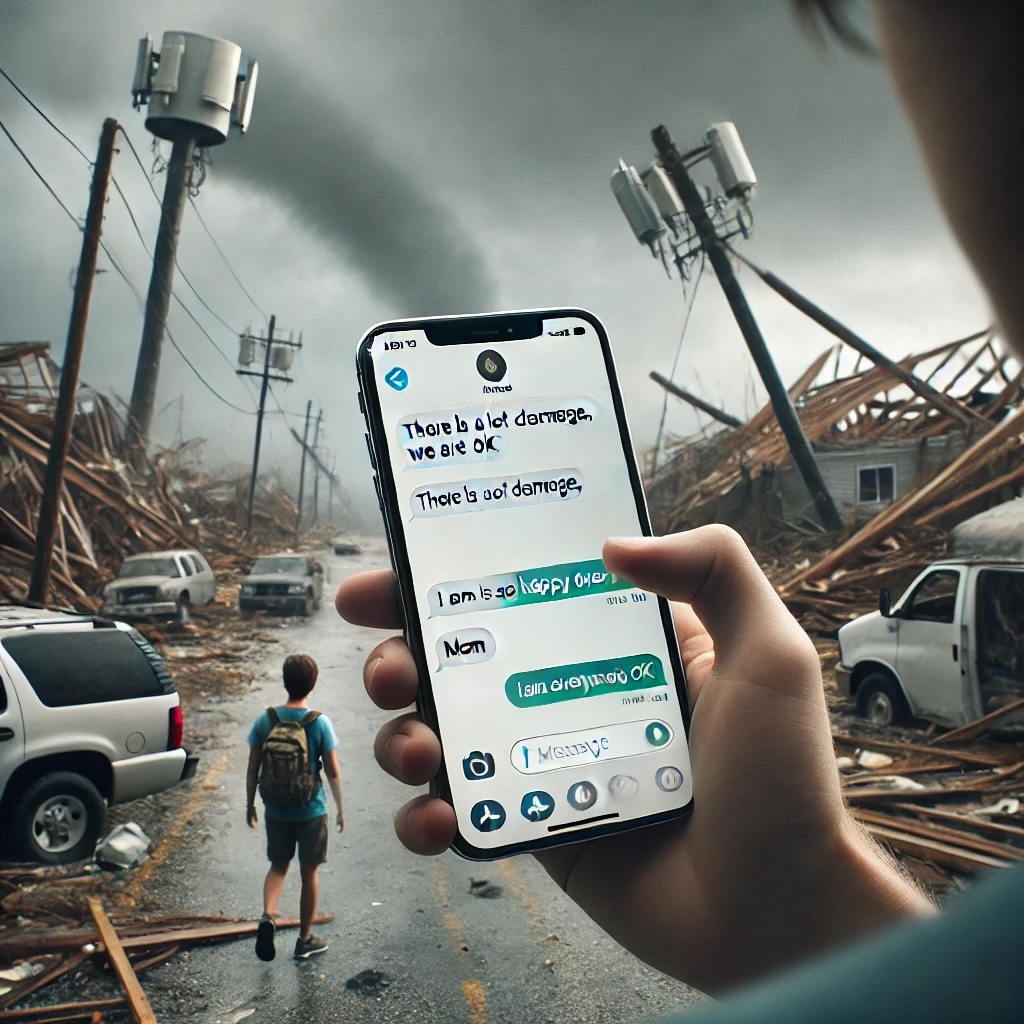
In today’s interconnected world, staying in touch with family and friends has never been easier—until disaster strikes. Natural disasters like hurricanes, wildfires, and earthquakes can knock out cell towers and leave entire regions without power, making communication nearly impossible when it’s needed most. However, with the release of Apple’s iOS 18, Apple has introduced a groundbreaking feature that could be a lifeline in these situations: Sending Messages via satellite when all cell towers and WiFi are not available.
This feature, available on iPhone 14 and later models, allows users to send and receive texts, emojis, and Tapbacks over iMessage and SMS even when they are outside of cellular or Wi-Fi coverage. Available for free in the U.S. and Canada for two years after activating an iPhone 14 or newer device, this new capability could be a game-changer during a disaster. Let’s explore how Messages via satellite works and how it could provide critical communication during various types of natural disasters.
Here is how to upgrade to iOS 18
Go to Settings > General, then tap Software Update. If you see more than one software update option available, choose the one that you want to install. Tap Install Now
Staying Connected When Disaster Strikes
When cell towers go down, or Wi-Fi is out of reach, it’s easy to feel cut off from the world. Whether you’re stranded after a hurricane or trying to navigate through an earthquake zone, the ability to connect with loved ones can offer immense relief. Let’s look at how iOS 18’s Messages via satellite could help in different disaster scenarios:
Hurricanes
Hurricanes often cause widespread destruction by knocking down power lines, damaging communication infrastructure, and flooding roads. During Hurricane Helene, which recently swept through coastal areas, residents were stranded for days without access to cell service. For many people, Messages via satellite was a literal lifeline. It allowed those affected to check in with family members, provide updates on their situation, and coordinate with others on finding safe shelter. The fact that this feature works without cell towers makes it invaluable during hurricanes, where traditional means of communication are often unreliable at best.
Wildfires
In wildfire-prone areas, communication lines are often cut off quickly, leaving residents vulnerable and without a way to know which evacuation routes are safe. In situations like this, Messages via satellite could be a critical tool for keeping communities informed and connected. For example, during a fast-moving wildfire, you could still text family members in nearby towns to coordinate meeting points or ask for help. Though Messages via satellite is not intended for emergencies—Apple’s Emergency SOS via satellite should be used in such cases—it can still play a crucial role in non-emergency communication.
Earthquakes
Earthquakes often cause widespread damage to cellular infrastructure, which can take days or weeks to repair. In earthquake-prone regions, many people prepare by stocking up on food and water, but few think about how to ensure they’ll be able to communicate if phone lines go down. With iOS 18’s satellite messaging, iPhone users can still send critical updates to friends and family during the aftermath of an earthquake. Whether it’s letting someone know you’re safe or finding out if others need assistance, having the ability to connect through Messages via satellite can ease a lot of the uncertainty that comes with these disasters.
How Messages via Satellite Works
Understanding how to use Messages via satellite is essential for ensuring it’s available when you need it. To connect to a satellite, you must be outdoors with a clear view of the sky and horizon. This is because the iPhone needs an unobstructed line of sight to connect to the satellite. Once connected, you can send iMessages to other iPhone users with iOS 18 or later. If your recipient isn’t using iOS 18, the message will automatically be sent as an SMS.
It’s important to note that this feature isn’t designed for emergency situations, where dialing 911 and using Emergency SOS via satellite is your best option. Messages via satellite is geared towards non-emergency communication, allowing users to stay in touch even when other networks are down.
What to Keep in Mind
While Messages via satellite is a powerful tool, it does have some limitations. It doesn’t support group messaging, and you can’t send photos or videos. Additionally, there may be a character count limit depending on the circumstances, and not all carriers support this feature yet. That said, the ability to send basic text messages when cell networks are down is more than enough to make it a valuable tool during natural disasters.
End-to-End Encryption for Security
For those concerned about privacy, it’s reassuring to know that iMessages sent via satellite are end-to-end encrypted, ensuring that your communication remains secure. This level of security means that even when you’re using satellite messaging, your conversations are protected from prying eyes.
A New Era of Disaster Preparedness
The introduction of iOS 18’s Messages via satellite marks a significant leap forward in how we stay connected during disasters. From hurricanes and wildfires to earthquakes, this feature has the potential to provide a crucial communication lifeline when all other systems fail. While it’s not a replacement for emergency services, it can still be a lifesaver for keeping in touch with loved ones and staying informed during uncertain times.
As the world continues to face an increasing number of extreme weather events and natural disasters, this new feature could be a turning point in disaster preparedness. Whether you live in a hurricane-prone coastal area or an earthquake zone, the ability to send messages via satellite ensures you’re never completely cut off from the people who matter most.
If you are looking to keep your business online during internet outages, contact 5Gstore.com for assistance

